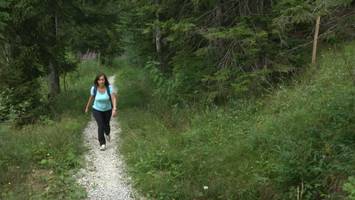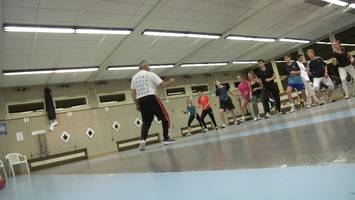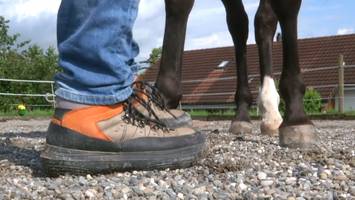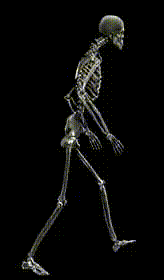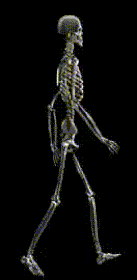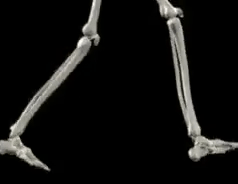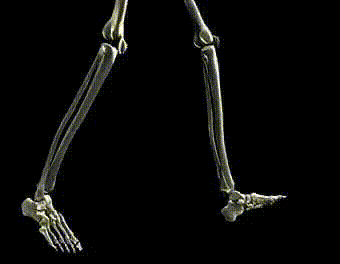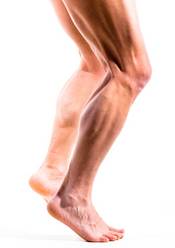Knee osteoarthritis/gonarthrosis
Osteoarthritis is a common disease in modern western society. On the one hand, pressure on the joints increases the more a person weighs and, on the other hand, strain is placed on the cartilage for much longer than just 50 years ago as life expectancy keeps increasing. Furthermore, civilised human beings spend most of their time walking on flat, hard everyday floors, and most shoe manufacturers follow the philosophy that a shoe has to support and guide the foot, and must have a small heel. But our knees are not built for this type of stress. It puts massive improper strain on them, causing them to wear much faster (knee osteoarthritis).
Definition
‘Osteoarthritis is a degenerative joint disorder, caused primarily by discrepancies between the load and load capacity of various parts of the joints and tissue.’ [1]
The knee joints are especially susceptible to osteoarthritis, since they have to support most of the body weight. Knee osteoarthritis is usually associated with pain and increasingly limited freedom of movement in the knees. Pain makes it more difficult to get enough exercise.
Causes
Osteoarthritis can be caused by excessive weight and excessive strain, such as occurs during extreme sports or when performing heavy physical labour. Causes also include changes in the cartilage metabolism with advanced age, metabolic disturbances, congenital malformations and acquired joint deformities, for example due to inflammatory joint diseases or after an injury.
Many years of improper strain on the knee joint while walking is another possible cause . (See Fig. 1 and 2) The greater the impact while walking and the less precise the movement, the faster the cartilage will wear. The main cause of improper strain on the knee joint is the long periods of time we in industrialised western nations sit every day, something that nature did not intend. Sitting for hours leads to the progressive shortening of the hip flexors. As a result, the person is no longer able to achieve a physiologically correct gait with the upper body upright. This in turn leads to excessive strain on the neck and back musculature, incorrect knee position, and therefore to increased cartilage wear.
Long-term consequences – trapped in a vicious circle
Pain caused by osteoarthritis can lead to relieving postures, subsequently causing excessive strain on the joints and other body structures or leading to secondary disorders or secondary osteoarthritis. Furthermore, pain leads to a reduction in exercise and those who move less automatically put on more weight. This in turn has a negative effect on osteoarthritis complaints. Many affected by osteoarthritis are therefore caught in a downward spiral. The primary therapy objective is to escape this downward spiral.
Conventional therapy
The kybun mat and kybun shoe are ideal for bringing more movement to everyday life and escaping the downward spiral of osteoarthritis – all without spending any additional time. Acute pain is alleviated quickly and, thanks to gentle loading of the knee joints, walking longer distances without pain is possible again.
The soft, elastic foam material acts as a ‘crumple zone’, effectively dampening impact on the joints during running and walking.
Movement becomes more comfortable again and knee complaints are reduced, usually after just a few minutes. Those who like to exercise frequently find it much easier to shed extra pounds, which in turn reduces strain on the joints. Nearly all customers affected by osteoarthritis report a reduction in pain since they started wearing the kybun shoe.
It’s not only the cushioning effect that helps alleviate pain. When standing the soft, elastic supporting underlay, one automatically keeps moving very slightly. When standing and walking on soft, elastic materials, the core stability musculature has to make a major contribution in order to stabilise the joints. Strong core stability musculature results in a more upright posture, leading to more precise movements in the joints. Lack of exercise due to pain results in long-term muscle loss (amyotrophia). Signs of excessive strain in the knee joint can develop more quickly as a result. The ability to stabilise the joints under strain can be improved further through proprioceptive, sensorimotor and coordinative training on unstable surfaces. This counteracts the progression of osteoarthritis. Training the core stabilising musculature is easy to integrate into everyday life by wearing the kyBoot.
Attention! Short-term effects are often confused with lasting effects.
The adjustment processes in the body triggered by the kybun shoe can take months or even years. Achieving lasting change is a protracted process.
Despite that, the effect of the soft, elastic material can also be felt quickly, for example in the relaxation of tense muscles and the alleviation of pressure points. These short-term effects must not be confused with the effects in the long run, since the long-term adjustment process cannot progress far enough in a week to be perceptible.
Short-term effects, on the other hand, can disappear again just as quickly as they came, or can even turn into complaints if you do not take the necessary breaks in the beginning.
It important to understand that an initial reaction and a reduction of the positive feeling in the first weeks with the kyBoot does not mean that the kybun shoe is no longer working, but merely that the short-term sense of well-being is reduced!
Prevention with kybun
Everyone knows that the body shows signs of wear over time and that problems and complaints while walking and running are bound to occur eventually. Yet most people only start to consciously perceive their body as a fragile and transient structure once they experience problems. In most cases, however, it is already too late because irreversible damage such as cartilage wear has already occurred.
Therefore it is important to act before pain can already be felt or is increasing. The kybun mat and kybun shoe help protect the joints and prevent osteoarthritis problems even in youth.
kybun exercises
For information about the special kybun shoe exercises or the basic kybun mat exercises, please click here: kybun exercises
The following adaptations to the standard implementation of interval walking are important in case of knee osteoarthritis :
- Objective: Pain relief
- If fast exercises cause pain or are perceived as uncomfortable, you should take smaller steps with a high stride frequency - Focus on slow exercises to promote stability and muscle coordination
- Slow exercise version: walking backwards (stability is provided by the transverse arch in the forefoot)
- Advanced: Walking downhill (forward)
- High requirements for stabilisation of the knees
Initial reactions
Application tips
- Everyday/leisure: Walk with the kyBoot or use the kybun mat as much as possible. Watch for fatigue > breaks
- Job: Sit as little as possible. Alternate sitting and standing in the beginning, and take along replacement shoes to change into
Precise movements are essential in case of knee osteoarthritis. Be sure to move in a precise manner and take breaks in case of fatigue or weakness.
Contact a kybun partner you trust if you have further questions, feel insecure or if there is no alleviation of pain when using the kybun shoe even though you are following the tips.
Opinions/customer testimonials
The most astounding thing with my patient was that she was practically pain-free within a week. This is enough to suggest that the success is a result of wearing the kyBoot. She wasn’t in pain anymore, she was able to move more easily and her movements were more symmetrical again. We were able to focus on the actual problem again, which was essentially getting her knee joint to work properly – the reason that she actually came to me in the first place.
I thought that was a good thing. I can't imagine it won't help. It was pointed out to me that they weren’t hard on the bottom. I suppose it’s just logical that that would make things better. Improvement is practically a given with this padding underneath.
My wife purchased kybun shoe (Bern) a few weeks ago and LOVES them! She was suffering a lot of pain in her feet related to a knee replacement some time ago and says she is enjoying a lot of relief. Now her co-workers want a pair!
Two years ago I had osteoarthritis and my knee was so hurt. I couldn't even walk but after I put the kybun shoes on it was like a miracle, I'mable to walk ride away. It was amazing, It was really amazing.
I have arthritis in one knee, and these shoes make an incredible difference. When I walk on hard surfaces for a long time wearing regular shoes, I feel pain after just ten minutes.
[1]:Pschyrembel, medizinisches Wörterbuch, 261. Auflage

